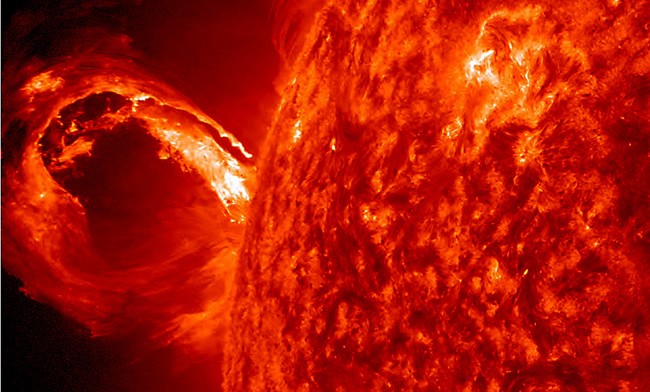
NASA's Solar Dynamic Observatory (SDO) on Wednesday (1 May) filmed a video of a major Coronal Mass Ejection (CME), a phenomenon that spanned over two and half hours.
The CME, which was recorded in extreme ultraviolet light, occurred on the sun's limb and is not headed towards Earth, according to NASA.
CMEs are huge solar winds arising from the sun's atmosphere. They can shoot over a billion tons of particles into space at over a million miles per hour.
Generally, if a CME is strong enough, then it can affect satellites and astronauts functioning within the orbit. It can even cause severe damage to power structures on Earth and bring out several communication and network snags.
The Solar Dynamics Observatory (SDO) was initiated by NASA in February 2010 and is slated to orbit for a period of five years. However, many satellites continue to function way past their estimated life span.
India Plans to launch satellite to study CME
To study and observe the Sun's CME and coronal magnetic field structures, the Advisory Committee for Indian Space Research Organisation (ISRO), has proposed a new satellite, Aditya, to be launched in 2015-16 from Sriharikota Satellite Launch Centre, Andhra Pradesh.
The satellite weighing 400 kilograms will be developed at a cost of ₹50 crore.
Here is NASA's video of Wednesday's CME phenomenon:

















